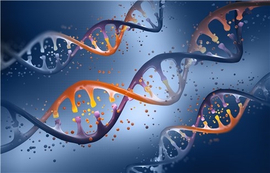You must be a member to visit this group
Pharmaceutical corporations and academic institutions have invested significant time, money, and effort in recent years to increase the accuracy and applicability of in vitro screening technology, which measures the biological activity and physicochemical characteristics of substances. Animal models are still used in the investigation of possible medication candidates, nevertheless.
FDA, NMPA, and other regulatory bodies demand that a drug's efficacy and safety be evaluated in animals before it is allowed on the market. An animal is a sophisticated biological system, whether it be a rat, dog, monkey, or even a person. There is currently no in vitro screening technique or combined technique that can accurately represent and simulate the complexity of the complete organism. Therefore, using animal models to assess the effects of potential medications on humans and diseases is essential.
classification of animal models for tumors
Mouse Xenograft tumor model
The mouse xenograft tumor model, which uses certain animals like SCID, NSG, B-NDG, and other conventional immunodeficiency or severe immunodeficiency mice, who cannot produce immune attacks on foreign cells, is the most widely used tumor disease model.
- Standardized cancer cell lines are employed for the CDX (Cell-line-derived Xenograft) model. Although the cells are simple to get, one disadvantage is that they cannot accurately mimic the initial clinical tumor.
- PDX (Patient-derived Xenograft) model: cells or tumor tissue from cancer patients that exhibit the traits of actual tumors.
Most antibody drugs kill tumors by mediating the immune system, so to evaluate their effectiveness, it is necessary to reconstitute an animal model of the human immune system (including DC, B, T, and NK).
Mouse allograft tumor model
The use of immunodeficient mice for modeling could lead to immune system rejection brought on by cross-species transplantation, which is a drawback of the xenotransplantation model. Although the mouse tumor cell lines are needed for modeling studies, the allograft tumor model enables researchers to employ a mouse model with a healthy immune system. The allograft model outperforms the xenograft model in simulating the actual cancer situation thanks to its fully working immune system. - Wild mouse allotransplantation model: mainly used in the pharmacological and pharmacological study of Surrogate antibody.
- Genetically modified/humanized mouse model: for the study of humanized antibodies.
Enjoy being online again!
Welcome to the community of good people who base their values on evidence and appreciate civil discourse - the social network you will enjoy.Create your free account
Enjoy being online again!
Welcome to the community of good people who base their values on evidence and appreciate civil discourse - the social network you will enjoy.Create your free account
Share this post
Categories
Agnostic does not evaluate or guarantee the accuracy of any content. Read full disclaimer.








